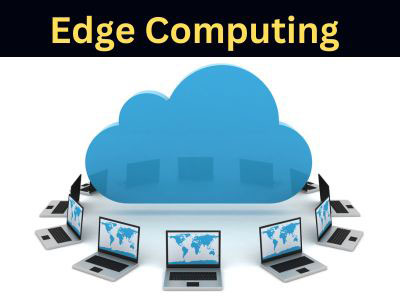Key Takeaway
Five examples of IoT devices include smart thermostats, wearable fitness trackers, connected security cameras, industrial sensors, and smart home assistants.
These devices collect and share data to improve convenience, efficiency, and decision-making across various industries and daily life applications.
Smart Home Devices (e.g., Thermostats, Security Cameras)
Smart home devices, such as thermostats and security cameras, have become an integral part of modern living, providing convenience, energy efficiency, and improved security. However, to function effectively, these devices require fast data processing and low latency. This is where edge computing comes into play. By processing data locally at the edge, smart home devices can provide faster response times and better user experiences.
For instance, a smart thermostat can adjust the temperature in your home based on your preferences or occupancy, without the need for constant communication with the cloud. Similarly, security cameras can analyze video feeds in real time to detect movement or recognize faces, triggering alerts or activating cameras as needed. By leveraging edge computing, these devices can operate autonomously and efficiently, even when internet connectivity is limited or intermittent. Additionally, edge computing enhances the security of smart home devices by ensuring that sensitive data, such as video feeds, does not have to travel to the cloud, reducing the risk of data breaches or unauthorized access.

Wearable Technology (e.g., Fitness Trackers, Smartwatches)
Wearable technology, such as fitness trackers and smartwatches, has become increasingly popular for personal health monitoring and fitness tracking. These devices rely on edge computing to process data locally, providing real-time feedback to users without relying heavily on cloud services.
For example, a fitness tracker can analyze heart rate and activity data on the device itself, ensuring instant updates while minimizing data transmission. This localized processing also enhances user privacy by keeping sensitive health data on the device.
For engineers working on wearable technology, understanding the constraints of limited processing power and battery life is critical. Optimizing algorithms for low-power consumption and efficient local processing is key to creating effective wearable solutions.
Industrial IoT Devices (e.g., Sensors, Robots)
In industrial IoT (IIoT), devices like sensors and robots generate massive amounts of data. By incorporating edge computing, industries can process this data locally, enhancing real-time decision-making. For instance, sensors monitoring machine health can provide immediate alerts to operators when equipment malfunctions or wears out, preventing costly breakdowns.
In robotics, edge computing enables robots to process their surroundings and make instant decisions without relying on cloud servers. This reduces latency, increases the accuracy of tasks, and ensures the smooth functioning of automated systems in manufacturing
Healthcare IoT Devices (e.g., Remote Monitoring Systems)
In healthcare, IoT devices, such as remote monitoring systems, are revolutionizing patient care. These devices collect critical health data, including heart rate, blood pressure, and glucose levels, which are then processed and analyzed in real-time. Edge computing enhances the performance and reliability of these healthcare IoT devices by processing data locally on the device, reducing latency and enabling faster medical interventions.
In remote monitoring systems, for instance, edge computing ensures that patient data is instantly available to medical professionals, enabling real-time decision-making without the delay caused by cloud-based data processing. Edge devices in healthcare IoT can also ensure that critical health data is stored securely on the device, maintaining privacy and ensuring compliance with regulations like HIPAA (Health Insurance Portability and Accountability Act).
Furthermore, edge computing helps in reducing network dependency, ensuring that medical devices continue to function even when network connectivity is lost. This is particularly crucial in emergency situations, where immediate action is required, and every second counts.
By providing real-time, localized data processing, edge computing boosts the efficiency, reliability, and security of healthcare IoT devices, transforming the way healthcare services are delivered.
Connected Vehicles (e.g., Autonomous Cars, Telematics Systems)
Edge computing is essential for connected vehicles, where real-time data processing is crucial for safe and efficient operation. Autonomous cars use edge devices to process data from a variety of sensors, including cameras, radar, and LiDAR, to make immediate decisions that impact driving, such as adjusting speed, avoiding obstacles, or changing lanes. These decisions must be made in milliseconds, making edge computing the ideal solution for minimizing latency and ensuring safety.
In addition to autonomous driving, telematics systems in connected vehicles also benefit from edge computing. Edge devices can process data on vehicle health, fuel efficiency, tire pressure, and other critical parameters without sending this information to the cloud first. This enables drivers or fleet managers to receive immediate feedback, improving vehicle performance and safety.
Conclusion
In conclusion, IoT devices are transforming various industries by offering innovative solutions for data collection, automation, and real-time analysis. The five examples of IoT devices—smart thermostats, wearable health trackers, connected home appliances, smart sensors in industrial settings, and autonomous vehicles—illustrate the diverse range of applications that leverage IoT technology to improve efficiency, enhance convenience, and promote sustainability.
As IoT continues to evolve, these devices will play an increasingly important role in shaping smart environments and driving digital transformation. With advancements in connectivity, data processing, and AI, the potential for IoT devices to further enhance everyday life and industrial operations is immense, paving the way for more intelligent, responsive, and interconnected systems.
